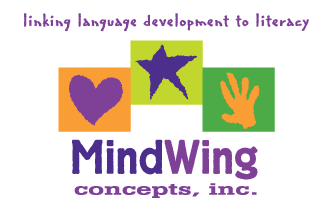Secure Checkout + FREE SHIPPING (U.S. Orders over $60)
Menu
-
- Home
-
About Us
-
The Approach
-
Linking Language & Literacy
-
Professional Learning
-
Learning Resources
-
SHOP
-
Blog
-
- About MindWing
- Our People
- Contact Us
- Your Account
- Login
-
United States (USD $)

Secure Checkout + FREE SHIPPING (U.S. Orders over $60)
Exploring Settings with Google Earth
September 10, 2010
In this post, I will be continuing to describe resources to supplement the lessons in It’s All About the Story, and moving on to the element of Setting. Setting is a key area of instruction for students on the autism spectrum not only because they tend not to observe the “expected behaviors” or script for a given setting, but also because they often leave out details about setting when telling stories to others, thus resulting in loss of a point of reference and confusion on the part of their listener. Students in social thinking/skills groups or individual treatment would therefore benefit from building descriptive skills through the use of the Setting Map contained in It’s All About the Story and other SGM resources...
Character, Social Thinking, and the Avatar
August 12, 2010
 Many of us think of the word “avatar” and have trouble separating the idea from that blockbuster movie about tall blue people-ish beings on an alien planet. In Avatar, the main character is disabled and uses an avatar to assume the form of an alien being and interact with their civilization. So we’re not that far off; an avatar is a visual representation of someone within an environment, usually a computerized one. Because there are many simple websites that create avatars, they actually have a place in our interventions as well! Using avatar makers with kids motivates them to visually represent and describe themselves to peers...
Many of us think of the word “avatar” and have trouble separating the idea from that blockbuster movie about tall blue people-ish beings on an alien planet. In Avatar, the main character is disabled and uses an avatar to assume the form of an alien being and interact with their civilization. So we’re not that far off; an avatar is a visual representation of someone within an environment, usually a computerized one. Because there are many simple websites that create avatars, they actually have a place in our interventions as well! Using avatar makers with kids motivates them to visually represent and describe themselves to peers...

MindWing Concepts and Instructional Technology
April 27, 2010
I have long had an interest in how technology can provide context within our interventions, much the same way a storybook can provide context. In this approach to intervention, MindWing's tools have served as essential structure to help my students break down language, (as used with a website that provides information, for example) or organize and produce language (when used in conjunction with a creative “Web 2.0” resource that allows students to save and publish work). To focus on this latter "bottom-up" strategy, I suggest you check out Kerpoof, one of my favorite resources for its versatility and ease of use.
Kerpoof* is a free, interactive website recently acquired by Disney and is basically an online version of Kidpix Studio. Kerpoof's interface allows you to choose a background, characters and other setting elements, and add word/thought balloons and caption boxes (sounding promising?). You can create, share, export or print the resulting pictures or multi-picture story sequences...
